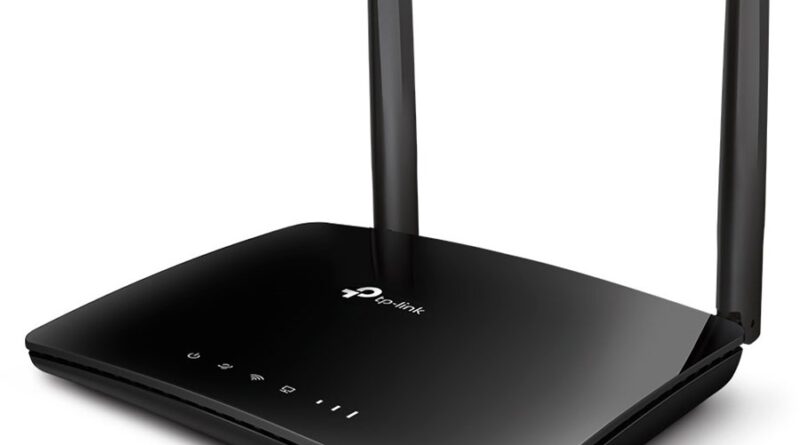Understanding 4G Modems: A Complete Guide
In today’s digital age, reliable and fast internet connectivity is a necessity. With the advent of 4G technology, mobile internet has significantly improved in terms of speed and reliability. A crucial component of this advancement is the 4G modem . If you’re unfamiliar with what a 4G modem is or how it works, this guide will help you understand everything you need to know about it, from its function and benefits to how it compares with other modem types.
What is a 4G Modem?
A 4G modem is a device that allows users to connect to the internet using a 4G LTE (Long-Term Evolution) mobile network. LTE is a standard for wireless broadband communication that significantly increases data speed and network capacity over older 3G technology. A 4G modem can be used in various devices, including smartphones, tablets, laptops, and desktop computers, providing a wireless internet connection via a SIM card.
Unlike traditional broadband modems, which rely on fixed-line connections like fiber or DSL (Digital Subscriber Line), 4G modems tap into cellular networks. This makes them ideal for people who need internet access in areas without wired infrastructure or for those constantly on the move.
Types of 4G Modems
There are several types of 4G modems, each designed for different use cases:
- USB 4G Modems (Dongles): These are portable devices that plug into the USB port of a computer or laptop, allowing the user to access the internet on the go. USB 4G modems are popular for their ease of use and mobility. They are often used by professionals who travel frequently or in areas where fixed broadband isn’t available.
- Mobile Hotspot Modems: Also known as MiFi devices, these portable routers allow multiple devices to connect to the internet via Wi-Fi. The modem itself connects to the 4G network and broadcasts a Wi-Fi signal, enabling smartphones, laptops, and tablets to share the connection. Mobile hotspots are handy for sharing the internet among multiple users or devices in areas where fixed-line internet is unavailable.
- Desktop or Home 4G Modems: These modems are designed for home or office use. They function similarly to traditional broadband routers but rely on the 4G LTE network. These modems typically have multiple Ethernet ports and Wi-Fi capability, making them a good alternative to fixed broadband in areas where wired connections are unreliable or unavailable.
- Integrated 4G Modems: Some devices, such as modern laptops and tablets, come with built-in 4G modems. These modems allow the device to connect directly to the cellular network without the need for external dongles or hotspots. This is convenient for users who need seamless internet access without relying on additional hardware.
How Does a 4G Modem Work?
The 4G modem works by receiving signals from the 4G LTE cellular network. When a user inserts a SIM card into the modem, it connects to the nearest cellular tower, establishing an internet connection. Data is transmitted wirelessly through the cellular network, allowing users to browse the web, stream videos, or download files at high speeds.
The modem communicates with the cellular tower using radio waves, and depending on the signal strength, the speed of the connection can vary. In areas with strong 4G coverage, users can enjoy speeds comparable to those offered by fiber or DSL broadband connections.
Key Features of a 4G Modem
4G modems come with a variety of features that make them versatile and effective:
- High-Speed Internet: 4G modems provide download speeds ranging from 10 Mbps to 100 Mbps, depending on network coverage, which is significantly faster than older 3G connections.
- Portability: One of the main advantages of 4G modems, especially USB dongles and mobile hotspots, is their portability. Users can take their internet connection anywhere within the network’s coverage area.
- Easy Setup: 4G modems are typically plug-and-play devices, requiring little to no configuration. For most USB dongles, you simply need to insert the device into your computer, and it will connect automatically.
- Multiple Device Connectivity: Mobile hotspot modems can support multiple devices simultaneously, making them a great solution for families or teams that need internet access for several gadgets.
- Battery-Powered Hotspots: Many mobile hotspots have rechargeable batteries, allowing users to remain connected even when there’s no power outlet nearby.
Advantages of Using a 4G Modem
- Mobility and Flexibility: The biggest advantage of a 4G modem is its mobility. Unlike traditional broadband, which is tied to a fixed location, 4G modems can be used anywhere within the network’s coverage area. This makes them ideal for travelers, remote workers, or anyone who needs internet access on the go.
- No Wired Infrastructure: In rural or remote areas where laying cables for DSL or fiber isn’t feasible, 4G modems offer a practical solution. They allow users to access the internet without relying on traditional wired connections.
- Fast Speeds: 4G LTE technology offers fast internet speeds, allowing for smooth browsing, video streaming, and gaming. While 5G promises even faster speeds, 4G is still more widely available and sufficient for most users’ needs.
- Easy Installation: Setting up a 4G modem is incredibly easy. You simply insert a SIM card, power on the device, and you’re ready to go. There’s no need for professional installation or complex wiring.
Disadvantages of Using a 4G Modem
While 4G modems offer many benefits, there are some drawbacks to consider:
- Data Caps: Most mobile data plans have limits on how much data you can use each month. Exceeding these limits can lead to additional charges or slower speeds. Fixed broadband services typically offer unlimited data, making them a better option for heavy internet users.
- Variable Speed and Coverage: The speed of your 4G modem depends on the strength of the network signal in your area. In urban areas, 4G networks tend to be faster and more reliable, but in rural or remote locations, speeds may vary, and connectivity might be limited.
- Latency Issues: While 4G offers decent speeds, latency (the time it takes for data to travel between your device and the server) can be higher than that of fixed broadband connections, which might impact activities like online gaming or video conferencing.
- Cost: Data plans for 4G modems can be expensive, especially if you’re using a significant amount of data each month. Some users might find it more cost-effective to stick with traditional broadband services.
4G Modems vs. 5G Modems
With 5G technology rolling out across the world, many people are wondering if they should invest in a 5G modem instead of a 4G one. Here’s a quick comparison:
- Speed: 5G offers significantly faster speeds compared to 4G, with theoretical download speeds of up to 10 Gbps. However, 4G speeds are still more than sufficient for everyday tasks like browsing, streaming, and gaming.
- Availability: 4G networks are much more widespread than 5G at the moment. While 5G is expanding rapidly, it’s still limited to specific areas, particularly in urban centers. 4G modems are a more practical option for users in areas where 5G coverage is lacking.
- Price: 5G modems and data plans are generally more expensive than their 4G counterparts. Unless you absolutely need the faster speeds of 5G, a 4G modem is a more cost-effective choice for most users.
Conclusion
A 4G modem is an excellent solution for individuals or businesses looking for a flexible, portable, and reliable internet connection. Whether you’re a digital nomad, a frequent traveler, or simply need internet access in a remote area, a 4G modem can keep you connected without the need for traditional broadband infrastructure.
While the future of mobile connectivity is moving towards 5G, 4G modems remain a solid and accessible choice for most users. With easy installation, high speeds, and mobility, they provide an efficient and effective way to stay online anywhere within the 4G network’s coverage.



